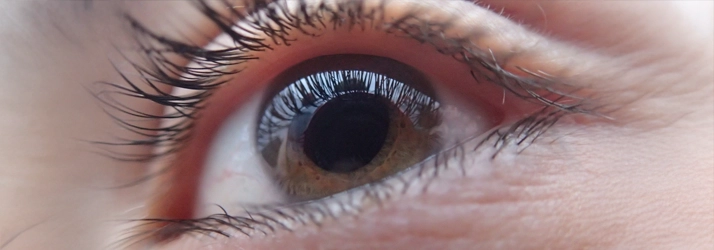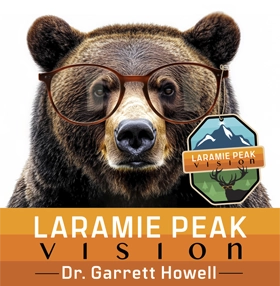Glaucoma Diagnosis and Treatment at Laramie Peak Vision, Laramie, WY

Glaucoma accounts for 9% to 12% of blindness cases worldwide, affecting approximately 5.9 million people. Glaucoma is a serious eye condition that can gradually damage your vision if left untreated. At Laramie Peak Vision in Laramie, WY, we help you manage and treat glaucoma with the latest technology and expert care. Our team is here to protect your sight and keep your eyes healthy; contact us today to learn more or schedule an exam!
What Glaucoma Does to Your Eyes
Glaucoma is an eye condition that slowly damages your optic nerve, which is the part of the eye that sends images to your brain. When the pressure inside your eye builds up, that pressure starts pushing on the nerve. And when that pressure doesn’t stop, the nerve can wear down over time.
Here’s the tricky part: Glaucoma doesn’t cause pain. It doesn’t make your eyes red. It doesn’t even blur your vision at first. It works quietly in the background, slowly removing your sight from the sides. You might not notice anything until it’s already taken too much.
But knowing what glaucoma does gives you power. It helps you catch it early. And when you catch it early, you can slow it down. That’s why regular eye exams matter so much. They let your doctor spot the damage before it gets worse. A quick check once a year that might protect your eyesight for years to come.
Types of Glaucoma
Glaucoma isn’t just one kind of problem. It comes in a few different forms, each with its own signs. But all of them can hurt your eyesight if you don’t catch them in time.
- Open-angle glaucoma is the most common. You won’t feel it, and might only notice it when your side vision starts to fade.
- Angle-closure glaucoma moves quickly. You could feel pain, see blurry shapes, or even feel sick. It’s an emergency and needs quick help.
- Normal-tension glaucoma is a bit strange. Your eye pressure looks fine, but the nerve still gets damaged somehow.
- Congenital glaucoma shows up in babies. It might be a clue if their eyes look cloudy or seem bothered by light.
Each type of glaucoma is different, but they all have one thing in common—they can take away your vision. That’s why knowing the signs and acting early can make a big difference.
Who Is at Risk for Developing Glaucoma?
Glaucoma can happen to anyone, but some people have a higher chance of getting it. If you know where you stand, it’s easier to stay ahead of it.
- Age: If you’re over 60, the risk gets bigger; for some people, it starts even earlier.
- Family history: If glaucoma runs in your family, your chances go up.
- Ethnicity: African Americans, Hispanics, and Asians have a higher risk.
- Health issues: Diabetes, high blood pressure, or thin corneas raise your chances, too.
- Past eye injuries or pressure problems: If your eyes have been hurt before or you have high pressure inside them, that’s something to watch.
You can’t always see glaucoma coming, but with the proper care, you can stop it from getting worse.
How Glaucoma Is Diagnosed and Monitored Over Time
Finding glaucoma takes a bit of work. Your eye doctor uses multiple tests to determine what’s going on. They check your eye pressure, look at the shape of your optic nerve, and test your side vision. If something seems off, they’ll do more tests to make sure.
But once they find glaucoma, the job’s not done. You need regular checkups to keep track of how things are going. Your doctor watches for changes. Is the pressure going up? Is the nerve holding steady? Is your vision staying the same? These are the little things that matter—and they add up over time.
Treatment Options Available for Glaucoma Management
Glaucoma treatments focus on one big goal—lowering the pressure inside your eye. When that pressure goes down, the optic nerve feels less stress, and that helps protect your vision. There are a few ways to do this; your eye doctor will help you find what works best.
- Eye drops: These are often the first step. You use them every day to help fluid drain better or to slow down the amount of fluid your eye makes.
- Laser treatment: This is a quick, in-office option that helps fluid move out more easily. It’s simple, but it works well for some people.
- Surgery: If drops or lasers don’t help enough, surgery can create a new drainage path to lower the pressure.
- Healthy habits: A good diet, gentle exercise, and not smoking can also support your eyes and overall health.
Meet Our Doctor
Garrett Howell, who’s been helping patients since 2012. Laramie Peak Vision offers complete eye care, including LASIK. We use the latest tools to give your eyes the best care. Have questions about costs or insurance? Just ask. We’re happy to explain. Helping you see comfortably and confidently is what we love to do.
Take the first step towards protecting your vision. Contact Laramie Peak Vision today to schedule your glaucoma screening and consultation!
OFFICE HOURS
Monday
8:00am - 5:30pm
Tuesday
8:00am - 5:30pm
Wednesday
8:00am - 5:30pm
Thursday
8:00am - 5:30pm
Friday
8:00am - 5:30pm
Saturday & Sunday
Closed
Laramie Peak Vision
269 N 3rd St
Laramie, WY 82072



